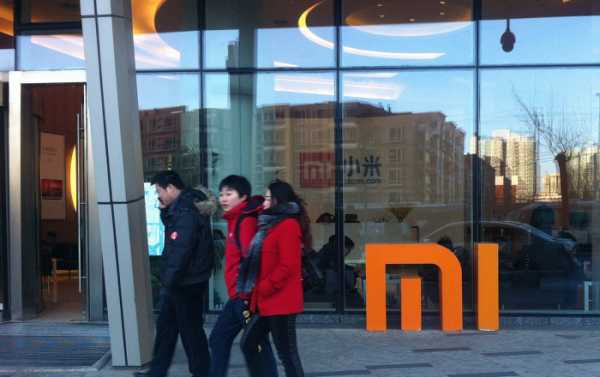
Companies urge the government to open a “green corridor” to enable them to freely promote on Twitter, Facebook.
A series of new photographs of well-polished fashion bloggers drive Chinese brand bikes on the streets of Italy during Milan Fashion Week was prevalent in the last time in foreign social networks.
Yellow ofo-brands bike, perfect for fashionable city atmosphere. Thanks to the cooperation of the CFAA with a loud fashion bloggers, their strategy paid off.
Lu Yiheng with a global division of branding in the CFAA told the “global times” that they did a background check on fashion bloggers in advance to make sure they had not said anything inappropriate about China.
From 2017, the CFAA knocked in 20 foreign countries to be successful in attracting large numbers of young followers. To attract foreign youth, the CFAA relies heavily on social media platforms.
The CFAA is not the only company to do so. Despite the wave of Chinese brands taking on screens and posters in new York’s times square, many companies such as the resort of the CFAA to use new tools in their attempt at foreign brand marketing.
Chinese technology giant Huawei has sponsored several celebrity Instagram to promote photo features of their latest mobile phones. One Instagram “agents of influence” Joe Greer, has 440,000 followers, on which he posted photos taken with the Huawei phone, jiemian.com reported.
CAO Changqing, managing Director, China outbound practice at Ogilvy, told the newspaper “global times” that in the past the role of Chinese companies was simple, as they were the only processors for foreign brands.
“Now with the upgrade of production capacity in China and worldwide growth of the middle class, Chinese companies can better tell their brand story,” said CAO. “But the challenge is how to do it.”
Social benefits
Forbes reported that in 2015, millennials are “social generation” who allow themselves to social media to share its brand with their groups. The report estimated that in the US, the young people had a power consumption of $ 10 trillion.
“Social media is a powerful tool for brand promotion abroad. But many Chinese companies do not fully use it, so they are blind to the power and value of social media,” says Lu.
According to Lu, the majority of foreign customers of the CFAA are in the age between 18 and 35. Lu introduced that better meet these specific needs of individuals, ofo analyzed that in different countries and regions, users typically have different preferences when using social media.
In the United States and Japan, for example, young people are more inclined to read short summaries of news in Twitter. So the team often feeds users updated with company news on Twitter, such as awards she has won in China.
On Instagram, the geographical boundaries are erased, and language requirements are not very high. These users just like to see beautiful pictures of an exquisite lifestyle of other people.
“You also need to think carefully about what hashtags should be used on various social media platforms. You can’t just translate from the Chinese; you have come to the hashtags that correspond to the local culture,” he said.
Different from social media in China, Lu said that foreign social media platforms, such as Facebook, can provide more accurate data for companies to advertise to target customers. He added that many Chinese companies lack the experience to notice these differences and fail to properly designate their products on these sites.
Report 2016 on the blue Focus showed that only 15 percent of American consumers exposed to Chinese brands through social media, with a big risk Chinese brand abroad “low key”. Institute for the study of the Internet showed in the same year, only 91 of the top 500 enterprises in China account Facebook.
In January 2017, according to news Agency “Xinhua” published a report on silk road, Xinhua, emphasizing the importance of social media in promotion of company’s image abroad and encourages Chinese companies to more effectively use Twitter and Facebook, as well as key opinion leaders on those foreign exchanges.
Given the demand for Chinese companies trying to enter the international market, the marketing shift is happening. Search baidu.com for “brand promotion” and “foreign social network” gives numerous seminars charging Chinese business owners thousands of yuan with promises to teach them how to fulfill their foreign accounts. Some agencies also charge an additional fee for managing social media accounts on behalf of the company.
However, Lu said that in some foreign social networks are blocked in mainland China, it caused some difficulties for the owners of the Chinese business. He urged the government to open a “green corridor” for companies like FTR to be able to develop overseas markets with free access to foreign websites.
Identity issues
CAO said that in the first phase, Chinese companies going global, many State-owned enterprises, infrastructure construction. But in recent years, more mobile, and Internet companies and gaming companies joined the wave.
TSAO helped Chinese brands to enter the global market for over seven years. He noted that the biggest obstacle for some companies from winning foreign consumers is the cultural barrier.
“We live in an environment that is not sensitive to cultural differences. Therefore, many Chinese brands do not have a clear idea that they can’t be offensive in other cultures,” he said.
For example, in 2016 the Chinese washing powder company Qiaobi made an announcement in which black people are “white” light-skinned Asian. The announcement was originally broadcast only in China, but immediately went viral, attracting more than 9 million Views on YouTube and drawing harsh criticism in the Western media in my perceive “racism”.
The company later apologized, but “accused foreign media to amplify the controversy.”
To better serve customers in different cultures and to avoid similar cultural attributes, the CFAA has hired local residents to promote their products on various social networks. While localization is a useful tactic, Lu noted that he also brings new challenges.
“How to allow your local staff to recognize that these companies are from China and agree with your values is one of the main problems,” he said, adding that some local senior managers argue that it is better to make the CFAA is similar to the “purely local company”, which Lu doesn’t approve of.
According to Lu, the growing influence of China on the world stage was best for other Chinese companies abroad. “Many parties would like to cooperate with us because they are also interested in the Chinese market,” he said.
But he acknowledged that it’s still a question of how to maintain a balance between localization and preservation of Chinese origin.
“Many people don’t think highly of made in China products. Therefore we make great efforts to participate in international exhibitions to let the foreigners know about changes to our products,” he said.
CAO said it is Not necessary to hide the “China identity” as the key to winning customers is product quality.
He added that as more Chinese tech companies to go global, past people’s perceptions of Chinese products as “low and wannabe” does not change. In many countries (such as India and African countries), made in China highly valued.
Political sensitivity
But when it comes to politics, things get complicated. Keji Mao, researcher at the analytical center Pangoal, once wrote that for Chinese companies entering the Indian market, they should take the political environment in India into account.
“India always likes to use economic friction as a way of dealing with China,” wrote Mao.
Last year, during the confrontation Doklam of 18 June and 28 August, the extremists in India call for a boycott of Chinese goods. During this period Indian Facebook page in India best selling mobile phone, Chinese brand xiaomi, there were fewer posts than usual.
Steven Dong, a Professor at the communication University of China, told the newspaper “global times” that it was “understandable” and “correct solution” for xiaomi to remain restrained in the Indian social media at the time.
“In politically sensitive of the two countries, the company shouldn’t have too much to say about social media,” he said.
Don noted that as approaches the 5g era, Chinese companies must learn to make smart, catchy videos and micro-videos for foreign Internet users. But at this stage, most boring company news or bland photos.
He added that Internet promotion must be integrated with offline activities. “We must not let foreign consumers think that we live in a virtual world. We also need to engage the local residents in day trips, social activities and other forms of cooperation,” he said, adding that Chinese companies should also use NGOs to benefit from the locals.
CAO said it is important for Chinese companies ” to develop a deeper understanding of the ‘together for a shared future for humanity, as proposed by the President XI Jinping”.
“This is good for the promotion of Chinese brand abroad. We need to find common values with foreign clients, so they can better make our products,” said CAO.
Sourse: sputniknews.com






